How to get around Mexico City on the Metro
Outside of walking, the Mexico City subway is the cheapest—and often the fastest—way to get around the city when you're visiting. Here's how to navigate the system.
If you’re not a city person, subway systems can be intimidating. The maps look like a confusing jumble of lines and colors, and they might not necessarily match up with the city streets above.
The Mexico City Metro has 12 lines and 195 stations, so it might feel overwhelming. But it’s a fast and affordable way to get around the city. It’s laid out with different colors for all the lines, and pictograms for all the stations, so you can find your way around even if you can’t read Spanish.
Here’s what to know.
Decide if the Metro makes sense
The Metro is usually a good option, but not always. A quick search on Google Maps will show you how long it will take to get where you want to go with different types of transportation so you can decide.
I’m going to use a trip from our apartment in Roma Norte to the Zócalo, Mexico City’s historic center, as an example.
Currently, this trip takes 24 minutes on the Metro, or 27 minutes by car. (Obviously, these times will vary.) At this point, taking the Metro makes sense, especially considering how much cheaper it is.
Buy a transit card
The first time you ride the Metro, you need to buy a transit card—officially, the Integrated Transit Card or Integrated Mobility Card—you use to enter and access the train platform. You can buy one in many train stations, at bus stops, and even at some stores.
It costs $15 MXN (75 cents USD) for the card itself and then $5 MXN (25 cents USD) per ride, no matter where you go. So, even though Uber is affordable in Mexico City compared to most US cities, the Metro is still a lot cheaper. Right now, it would cost $160 MXN ($8 USD) before tip for the trip to the Zócalo.
To buy a card, you can look for the ticket window, but if you don’t speak Spanish, it’s easier to use a machine. Just choose English and then follow the prompts. You can pay with cash, change, or card. This YouTube short we made shows you exactly how to do it.
Estimate how much you’ll use the Metro during your trip and then add the appropriate amount to the card. For example, $100 MXN ($5 USD) will pay for 17 trips after you subtract the cost of the card. You can always add more money to the card when you need to.
You can use the same card to pay for multiple people on any trip. So, if you’re traveling with a family or group of friends, one person can scan the card and then hand the card back to the next person to use.
Once you have your card (assuming you buy it at the station), look for a row of turnstiles. Just tap your card on the reader, wait for the screen to light up green, and pass through. It’s so easy even I can do it.
Figure out which way you need to go
Like most subways, the Mexico City Metro uses the stations at each end of the line to indicate the direction you want to go. So, for the first leg of a trip to the Zócalo, I take line 3 toward Indios Verdes and ride the train four stops to Hidalgo. I can see the names of the stops along the way (Niños Héroes, Balderas, and Juárez) so I can confirm I’m going the right way.
At Hidalgo, I need to change to another line. So I get off at Hidalgo and look for signs that say “Correspondencia.” They direct you to other connecting lines in the same station. I head to line 2 toward Tasqueña.
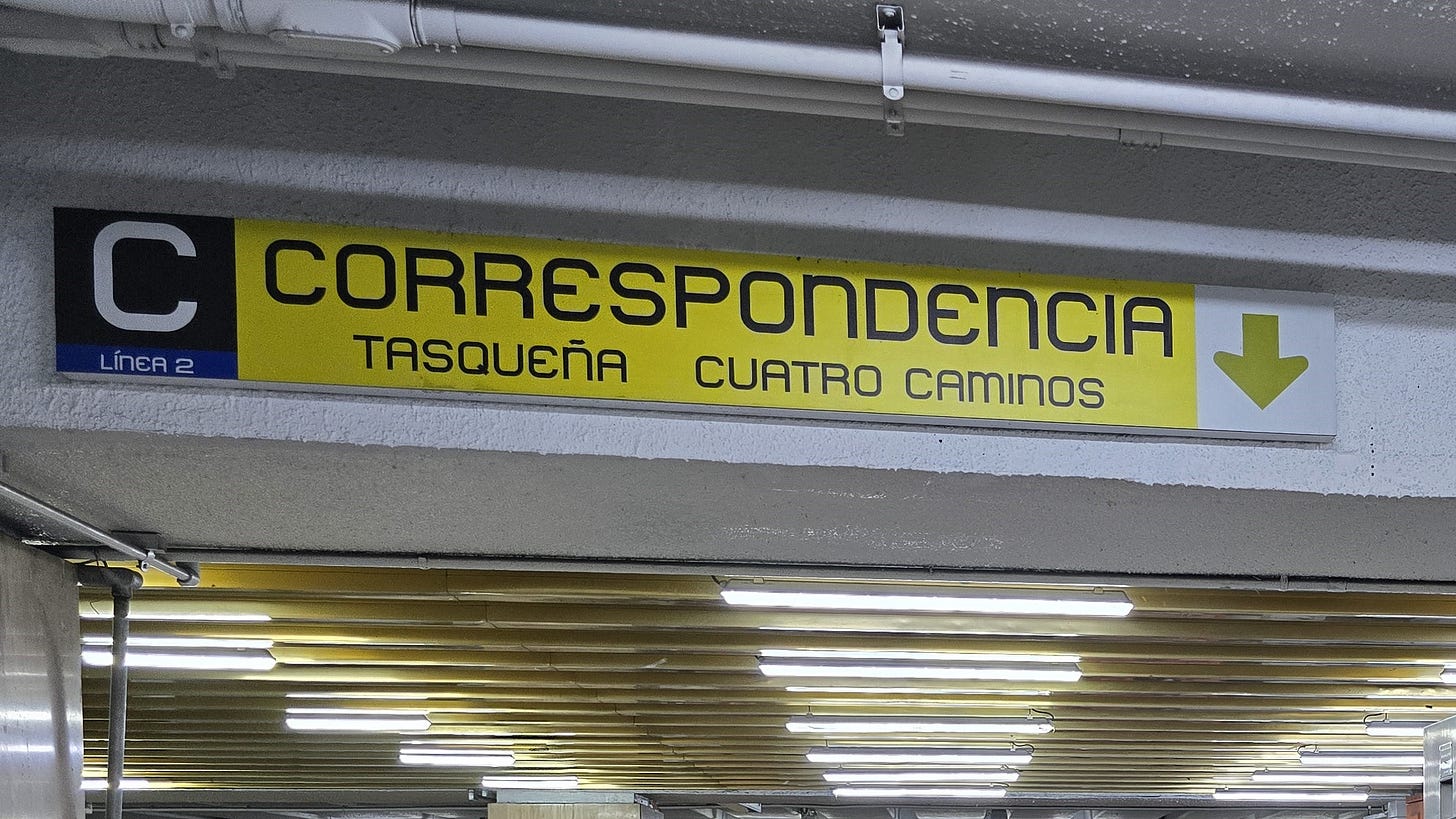
From there, I ride three stops (Bellas Artes and Allende are along the way) and get off at Zócalo.
From there, I look for signs that say Salida (exit) and follow them until I’m back on the city streets.
Is it safe?
We’ve almost always felt safe riding the Metro in Mexico City. But there are a couple of things to keep in mind.
Think twice about riding when it’s likely that the trains will be really crowded. A friend of ours who’s lived in Mexico City for 15 years says the only people she knows who have been pickpocketed were riding the train at rush hour. You probably want to avoid:
Weekdays from 7:30 to 9:30 am and 5:30 to 8 pm.
Rainy weather, when people who usually walk or bike take the train instead.
Times when people are heading to big events like the Day of the Dead parade, the Independence Day celebration, or soccer games.
If you get on a crowded train car, start to make your way toward the door a stop or two before you want to get off. The doors don’t always open for long, people on the platform often push their way into the car before those inside can get off, and if you’re not close to them, you might not be able to get out in time.
If you get to the platform, and it’s really crowded, I recommend leaving and taking an Uber or walking if you can. People cram onto the train cars to the point where you can literally be lifted off your feet. It’s not comfortable, and it doesn’t feel safe.
You can also run into a situation where you get on a train that’s not overcrowded, and then more people get on in the next few stops, so it goes from full to dangerously crowded.
In the stations and on the trains, use the same common-sense precautions you would take in any busy place—keep your bags closed, put your wallet in your front pocket or a zipped inside pocket, and keep your backpack in front of you.
In the stations we’ve been to, police are usually there keeping an eye on everyone and everything. They’ll often carry whistles (which they blow unnecessarily, it seems) to warn people that a train is approaching.
Women and children
Women and children under age 12 can ride in cars designated just for them. They’re usually the first cars on the train, and you’ll see signs for “Mujeres y menores de 12 anos” in the restricted waiting area. There might be a barricade or even a police officer monitoring the area.

These cars are almost always less crowded, so they’re a great option for single women, groups of women, women and children, or even women traveling with men—I’ll sometimes ride in that car even if I’m traveling with Paul, and meet him at our destination station.
A few other tips
The Metro runs from 5 am to midnight Monday through Friday, 6 am to midnight on Saturdays, and 7 am to midnight on Sundays and holidays.
Trains run frequently. I don’t think we’ve waited longer than 5 or 6 minutes for a train, though we usually ride the same couple of lines, so we can’t say for sure about the whole system.
Be prepared for stairs. You’ll usually walk downstairs to enter the station and upstairs to leave, and if you change lines, you’ll run into more stairs. Sometimes there’s an escalator, but don’t count on it.
If you ever get on a train going in the wrong direction (we’ve done this more than once) just get off at the next station and switch to the line going in the opposite direction. Problem solved.
You can use your transit card for all different types of transportation in Mexico City—these logos represent the Metro, Cablebús, bike sharing system (Ecobici), RTP buses, Metrobús, and light rail.
If you’re planning a trip to Mexico City, you may also want to read:





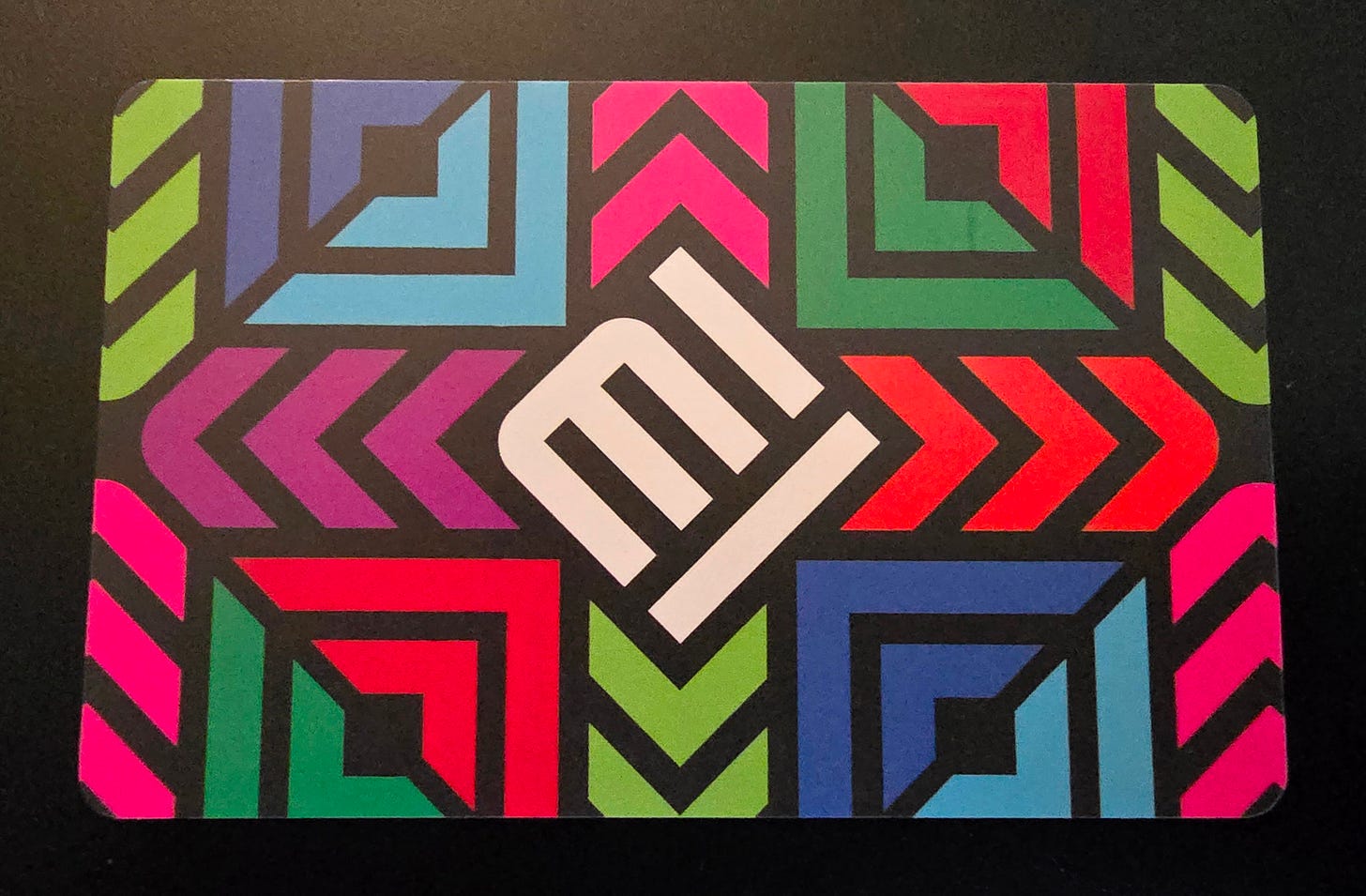

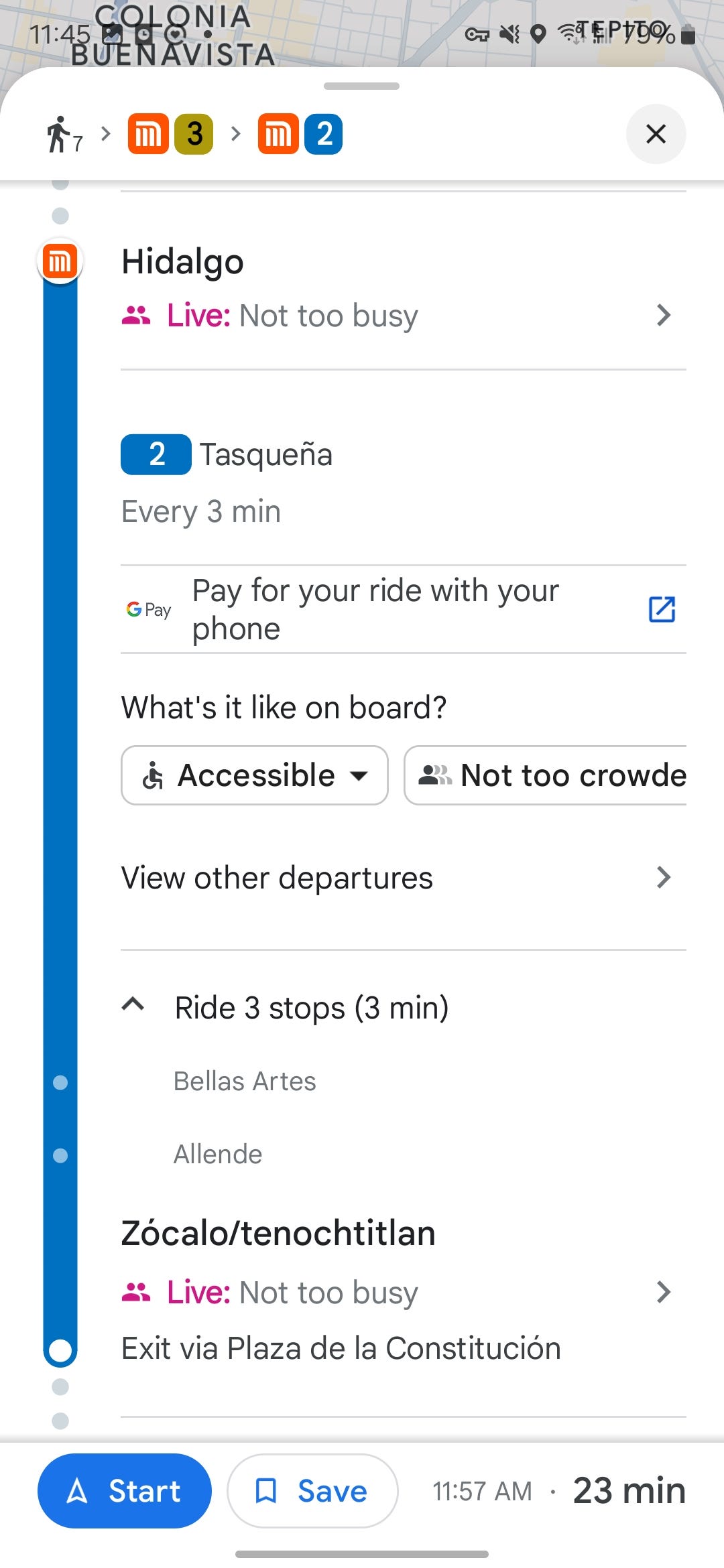
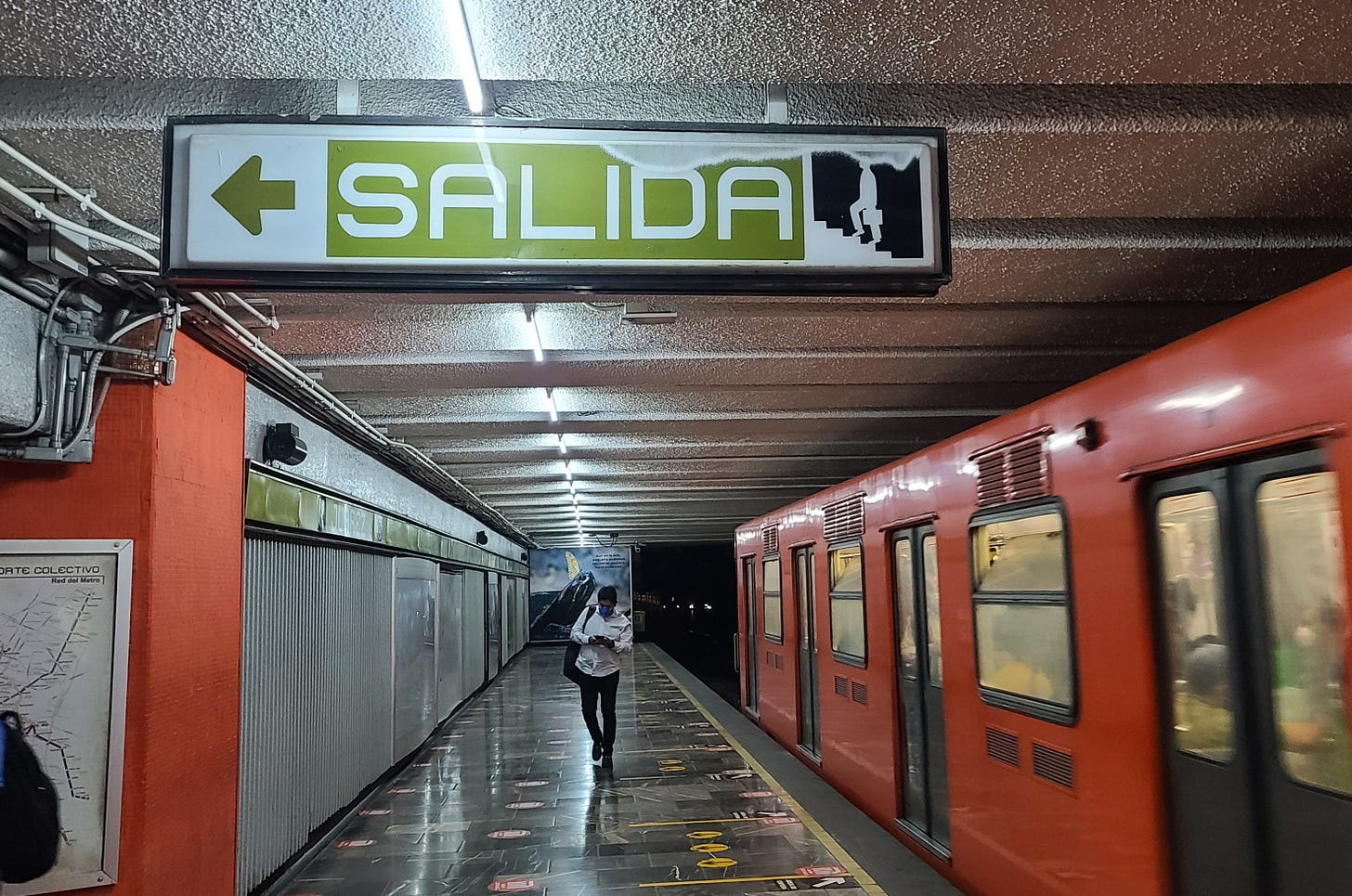

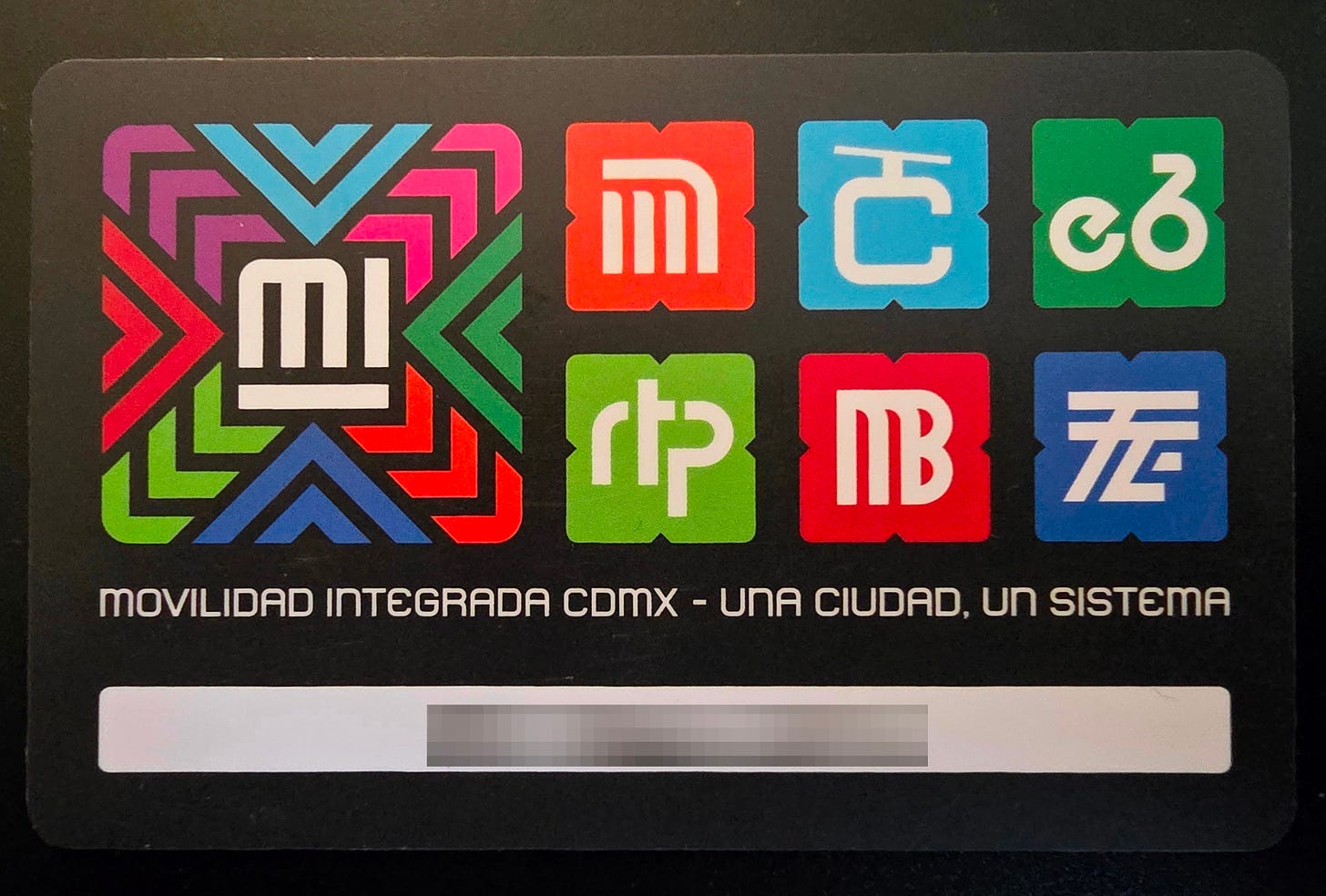


Literally love you're explaining this step by step. If only I'd had this blog 14 years back!! I'd have been golden...
Also, I love that you ditch Paul sometimes to go in the women's carriage! I've never done that because I've usually found the opposite is true: they're WAY busier than the mixed ones because all the women, children, and elderly are cramming into just 1 of 3 carriages. Drives me barmy! But the fact that you've seen different makes me check my assumptions.